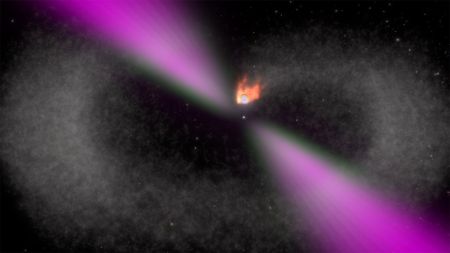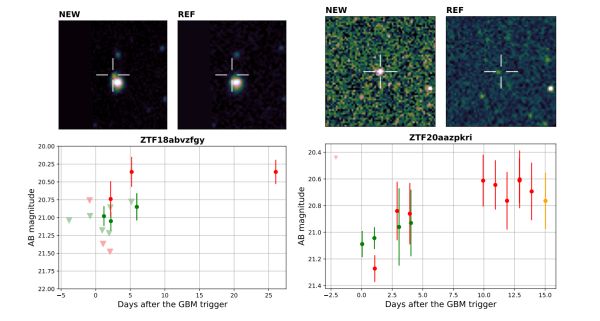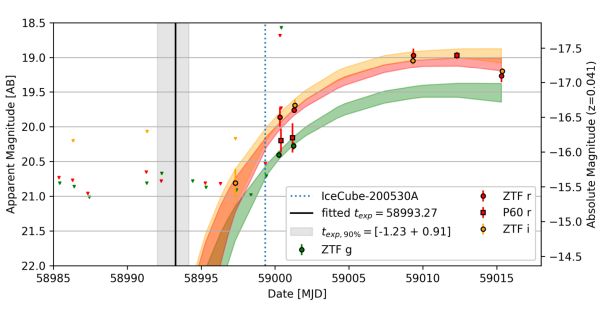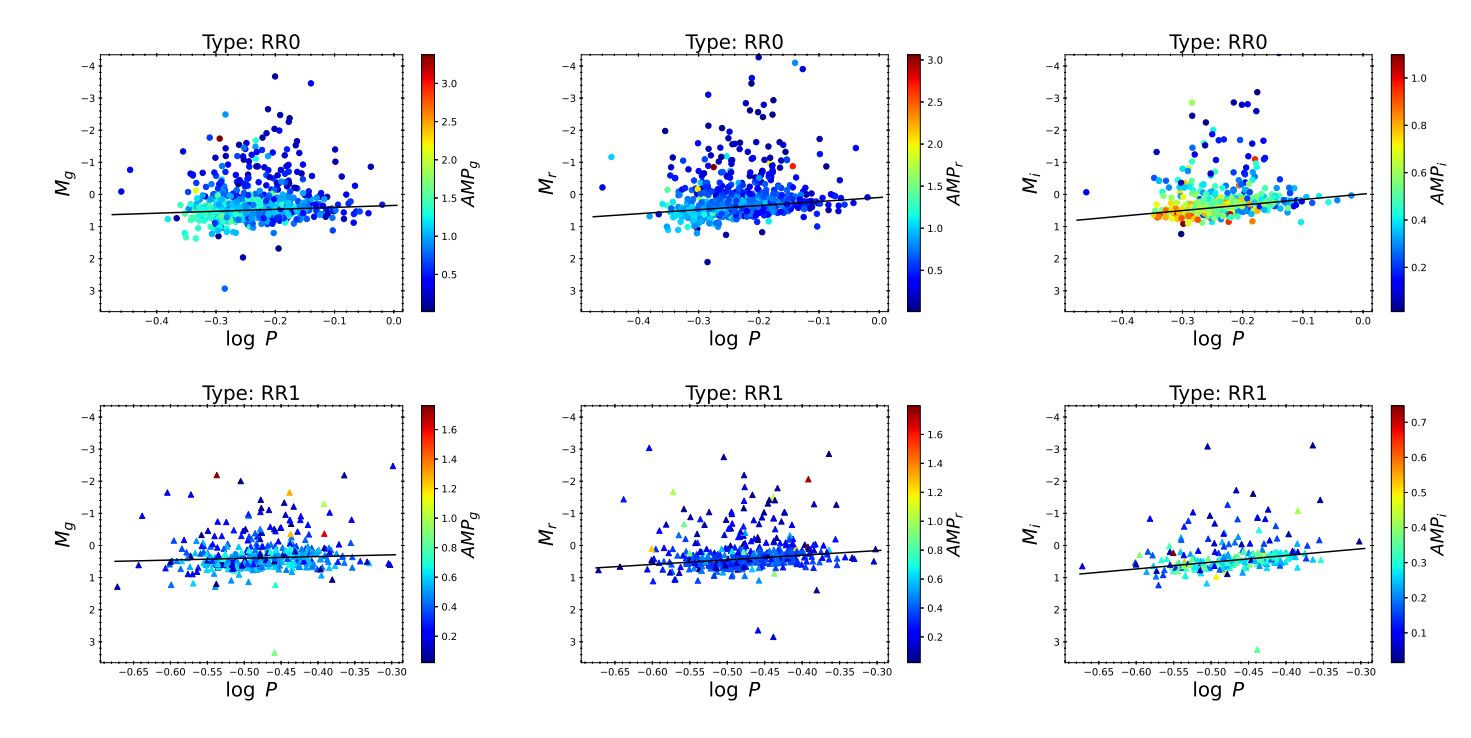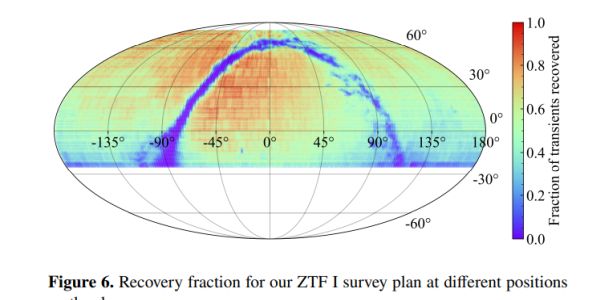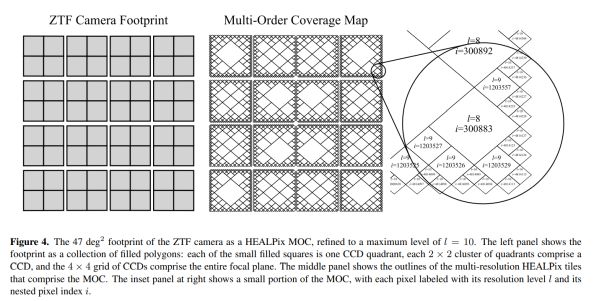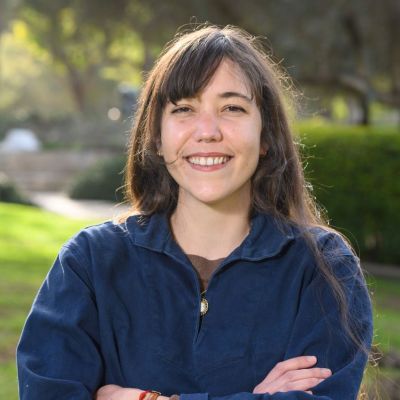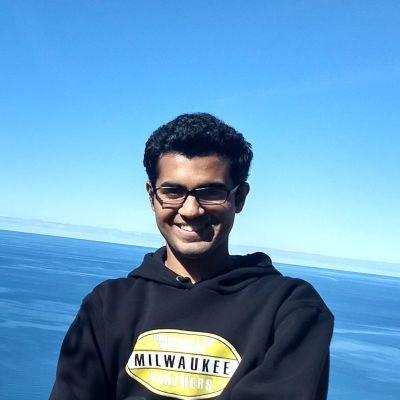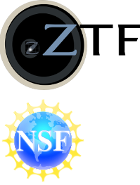ZTF team meets in Paris
The ZTF collaboration met in Paris for its spring team meeting on May 10-13. This was the first in-person meeting in two years and everyone was eager to mingle and chat over a drink. Science working groups shared science results and discussed plans for the future with ample time for discussion about cross-working group collaborations, strategic planning for the operations and scientific goals of ZTF in the remaining part of phase II of the project and beyond. A summary of the program is available online.
ZTF Public Data Release 11
The Zwicky Transient Facility (ZTF) and IPAC at the California Institute of Technology announce the eleventh ZTF Public Data Release. This release adds 2 months of observations to the tenth data release, up to 9 March 2022 for the public portion of the survey, and private survey time prior to 6 November 2020. The products include ~38 million single-exposure images, ~164,400 co-added images, accompanying source catalog files containing ~628 billion source detections extracted from those images, and 4.2 billion light curves constructed from the single-exposure extractions. Access to the data products is available via the on-line and API services of the NASA/IPAC Infrared Science Archive (IRSA).
Science Highlights
Black Widow Star Devours Its Rapidly Circling Companion
Kevin B. Burdge et al, Nature 605, 41–45 (2022)
A new study published in the journal Nature reports a new candidate black widow star system, named ZTF J1406+1222, in which the stars orbit around each other every 62 minutes—the shortest orbital period observed to date for this type of binary star system. The new candidate system was found using the Zwicky Transient Facility (ZTF) instrument at Caltech's Palomar Observatory.
Press ReleaseSearching for Short GRBs with the Zwicky Transient Facility
Astronomers report on an extensive program using ZTF to perform target-of-opportunity (ToO) observations on 10 Fermi SGRB triggers during 2018 and 2020-2021 to search for an optical counterpart. While none was found so far, the campaign shows that that ZTF is an efficient instrument for searching for poorly localized SGRBs. Based on the median limiting magnitude of ZTF, our searches would have been able to retrieve a GW170817-like event up to ~ 200 Mpc and SGRB afterglows to z = 0.16 or 0.4, depending on the assumed underlying energy model. Future ToOs will expand the horizon to z = 0.2 and 0.7 respectively.
Neutrino follow-up with ZTF: Results from the first 24 campaigns
The Zwicky Transient Transient Facility (ZTF) performs a systematic neutrino follow-up program, searching for optical counterparts to high-energy neutrinos with dedicated Target-of-Opportunity (ToO) observations. Since first light in March 2018, ZTF has taken prompt observations for 24 high-quality neutrino alerts from the IceCube Neutrino Observatory, with a median latency of 12.2 hours from initial neutrino detection. In this paper, astronomers from the ZTF collaboration present the full results of the program through December 2021.
Metallicity relations in RR Lyrae in globular clusters
Led by ZTF partners in Taiwan, astronomers from the ZTF collaboration have used a large sample of LL Lyrae in globular clusters to derive their metallicity relationship. The final sample includes ~750 objects in 46 globular clusters. The study used g, r and i band data and derived, for the first time, the period-Q-index-metallicity relation.
Type Ia early excess emission with ZTF
ZTF partners in Trinity College Dublin have performed toy simulations to investigate the efficiency with which young type Ia supernovae are recovered. The simulations predict that in a typical three day cadence survey, only ~10% of type Ia supernovae would be detected early enough to rule out the presence of an excess. A two day cadence such as the ZTF, should see this increase to ~15% and this is what astronomers observed with more detailed simulations of the Zwicky Transient Facility surveys.
HEALPix Alchemy - Rapid All Sky Geometry Calculations
The authors introduce HEALPix Alchemy, an open-source, pure Python implementation of a set of methods that enables rapid all-sky geometry calculations. HEALPix Alchemy is built upon HEALPix, a spatial indexing strategy that is widely used in astronomical databases as well as the native format of LIGO-Virgo-KAGRA gravitational-wave sky localization maps.
ZTF Faces
Rachel Bruch
(Weizmann Institute of Science, Israel)
I was born and grew up in the French Caribbean, on an island called Martinique. I moved to Gif-Sur-Yvette in France to study Physics and Mathematics when I was 17.
Read OnSiddharth Mohite
(University of Wisconsin, Milwaukee, USA)
I am originally from the city of Pune in India. Through my childhood, I was fascinated by the stars and the enigmatic night sky. Having an environment in my home city that was supportive of education and research, set me on the path towards exploring a career in astronomy.
Read OnScience with public ZTF data
We highlight scientific publications from individuals and groups outside of the ZTF partnership that use ZTF public data
Accretion Disk Size Measurements of Active Galactic Nuclei Monitored by the Zwicky Transient Facility
The authors from the Chinese Academy of sciences compile a sample of 92 active galactic nuclei (AGNs) at z smaller than 0.75 with gri photometric light curves from the archival data of the Zwicky Transient Facility and measure the accretion disk sizes via continuum reverberation mapping. They employ Monte Carlo simulation tests to assess the influences of data sampling and broad emission lines and select out the sample with adequately high sampling cadences (3 days apart in average) and minimum contaminations of broad emission lines. Their results are broadly consistent with previous studies raising a puzzle about the "standard" accretion disk model.
'How-to' Guide
Update to Forced Photometry Service
There has been a minor update to the ZTF forced photometry service. The Julian Date parameters are now optional, with defaults if not specified:
JD_START will be set to start of the survey (2458194.5=2018-03-17)
JD_END will use the current JD
As a result, a request without JD_START & JD_END will query the entire possible time range. This will be significant load for high-cadence fields, so we request that users use it sparingly/appropriately! In addition, these defaults will be substituted for requests where JD_START parameter is before the beginning of the survey or supplied JD_END is in the future. These changes were implemented to make the service easier to use and prevent issues with cached requests.
If you want to sign up for the forced photometry service, please send an email to ztf [at] ipac.caltech.edu to register. Note that emails that are not from an institutional email are automatically filtered out.
Forced Photometry GuideOutreach
Apply for the ZTF Summer School 2022
The ZTF summer school in 2022 remains open for applications until May 31. The school will run between July 25-29 and will focus on providing students with the skills to conduct complex data analysis of time-domain astronomy data particularly in the context of multi-messenger astrophysics and the hunt for electromagnetic counterparts of gravitational waves. The topic is particularly relevant as LIGO/Virgo is preparing to begin their fourth observing run in September this year.
The school will be hybrid. Participants attending in person will he hosted by the University of Minnesota, Twin Cities in the USA. We will also accept a certain number of participants who will attend remotely. Designed for advanced master and early graduate students, the school will include lectures/discussions and hands-on tutorial with Python notebooks led by experts in the field.
ApplyAn undergraduate studying white dwarfs with ZTF receives an NSF Graduate Research Fellowship
Joseph Guidry was an undergraduate at UT, Austin when he picked up a project under the guidance of Zach Vanderbosch (now a ZTF postdoctoral fellow at Caltech). He used ZTF to look for white dwarfs that host planets around them. Joseph is one of the recipients of the prestigious NSF graduate research fellowship this year. Read our brief interview with Joseph to learn why he picked astronomy and where he is heading to in the future.
Read MoreHigh school students explore the variability of protostars with ZTF
Hillendrand, Lynne A. et al AJ 2022
A group of four high school students from Harriton high school in Pennsylvania wanted to work on an astronomy project. One of them moved to California and decided to email Lynne Hillenbrand, a professor at Caltech. Professors generally get a daily avalanche of emails from students who want to conduct research with them but this particuar one caught the attention of Lynne because it reffered to 'hoagies" in the opening line, a slang specific to Philadelphia, where Lynne was from. A year later, the students are publishing their work in the Astronomical Journal.
ZTF is supported by the National Science Foundation and a collaboration including Caltech, IPAC, the
Weizmann Institute for Science, the Oskar Klein Center at Stockholm University, the University of
Maryland, Deutsches Elektronen-Synchrotron and Humboldt University, Lawrence Livermore National
Laboratory, the TANGO Consortium of Taiwan, the University of Wisconsin at Milwaukee, Trinity College
Dublin, IN2P3, University of Warwick, Ruhr University Bochum, and Northwestern University . Operations are conducted
by COO, IPAC and University of Washington.
Any opinions, findings, and conclusions or recommendations expressed in this material are those of the
author(s) and do not necessarily reflect the views of the National Science Foundation.

